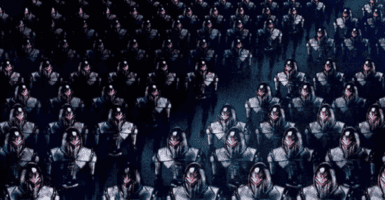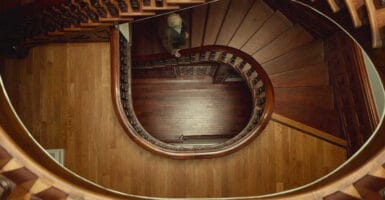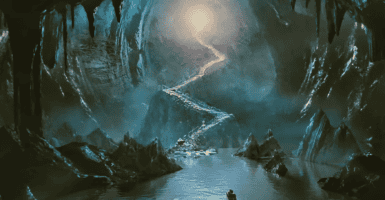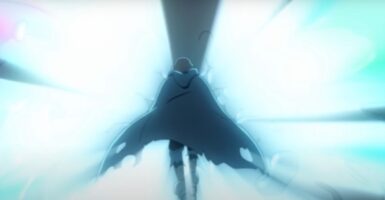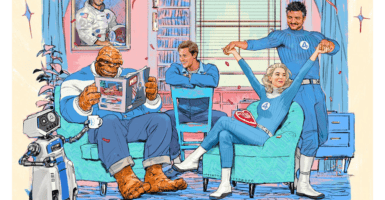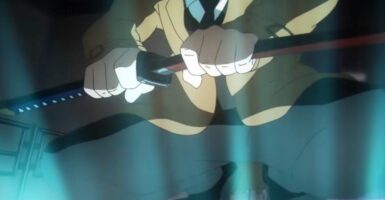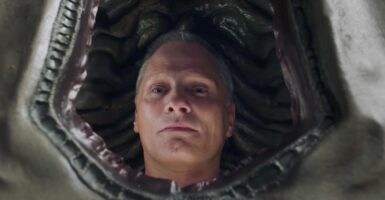Dung Beetles Use The Milky Way To Navigate
This article is more than 2 years old
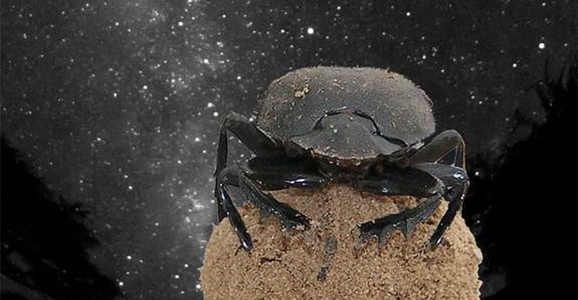 Sure, the Nobel Prize is nice and everything, but it isn’t half as interesting as the Ig Nobel Prize. The Ig Nobel Prizes, which are organized by the Annals of Improbable Research and are presented each fall at Harvard University, honor scientific achievements that sound pretty ridiculous, but which are based on sound science and actually merit thought. This year, there were a bunch of fun winners, including a psychology experiment that concluded that people who think they’re drunk tend to also think they’re attractive (this explains a lot, doesn’t it?), an experiment about the effects of opera music on mice who have had heart transplants, and a study that observed dung beetles using the cosmos to help their sense of direction.
Sure, the Nobel Prize is nice and everything, but it isn’t half as interesting as the Ig Nobel Prize. The Ig Nobel Prizes, which are organized by the Annals of Improbable Research and are presented each fall at Harvard University, honor scientific achievements that sound pretty ridiculous, but which are based on sound science and actually merit thought. This year, there were a bunch of fun winners, including a psychology experiment that concluded that people who think they’re drunk tend to also think they’re attractive (this explains a lot, doesn’t it?), an experiment about the effects of opera music on mice who have had heart transplants, and a study that observed dung beetles using the cosmos to help their sense of direction.
The cosmically inclined dung beetle study actually won two Ig Nobels: one for biology and one for astronomy. It was a bIg Nobel win for the beetles and for the scientific team comprised or researchers from Sweden, Australia, South Africa, Germany, and the United Kingdom. They’ve even got the best research project tag line: “Some people think our research is crap.” Yes! Scientists who can pun (and laugh at themselves) are the best!
So this is a lovely little tale about the dung beetles and the stars. I’m glad they’ve got some beauty in their lives, given that they spend their time on and around crap. And while you might figure that these little dudes aren’t particularly smart, you’d be wrong. At the very least, dung beetles have a good sense of direction — with a little help from cosmic clues, as well as the Milky Way itself.
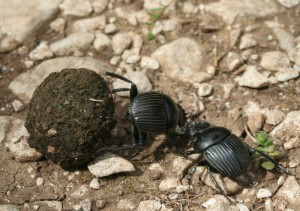
Here’s a glimpse of a day in the life of a dung beetle: they scout around for fresh feces, collect a sample, and then roll it into a movable ball so they can, um, go feed their young with it. I mean, it might not sound great, but I think it’s pretty smart to use the old wheel to move that crap around. The weirdest part of the dung beetle’s ritual is that before they roll away the crap to take to their offspring, they dance on it. Yep — they just boogie right on down.
You might think it’s an obvious dance of celebration, a “look at this shit ball, guys!” kind of thing. But it’s not. They’re actually checking out the sky to get a sense of where they are and where they need to go. It turns out that beetles don’t only have eyes for poop — they also have eyes for light polarization. So when they’re dancing, they’re actually processing the sun, moon, and light patterns so they don’t double back to the original pile of poo, and thus avoid confrontations with nefarious poo-stealing beetles and other insects.
This raised the question of what happens under different circumstances — i.e., under an overcast sky versus a clear sky, and so on. So these researchers monitored the insects under these various conditions, and then they did something a little wacky — they fitted some of the beetles with little hats that made it impossible for them to see the sky. They found that overcast skies result in much longer journeys, and the little beetle hats made it even harder. Don’t you think dung beetles have it tough enough, folks?

The weird thing is that dung beetles have tiny eyes that aren’t sensitive or sharp enough to see individual stars, so researchers then moved to the planetarium to figure out exactly what information the beetles get from the nighttime sky. They repeated the experiment under different star patterns and different visibilities and found that the beetles could navigate just as well when they could only see the Milky Way as they could when they could see an entire sky full of stars.
The researchers thus concluded that the beetles use the light provided by the Milky Way — that is, when they can see it. They’re not sure what beetles do in regions were the light from the Milky Way isn’t distinct. The next phase of the experiment is to figure out whether there’s a relative importance to cosmic clues the beetles use — that is, whether they prefer using the moon, the ambient light, or the Milky Way if all three are available, or whether they’ll use all of the available cues equally. Given that the dung beetles can’t smell stars, it’s a good question.

